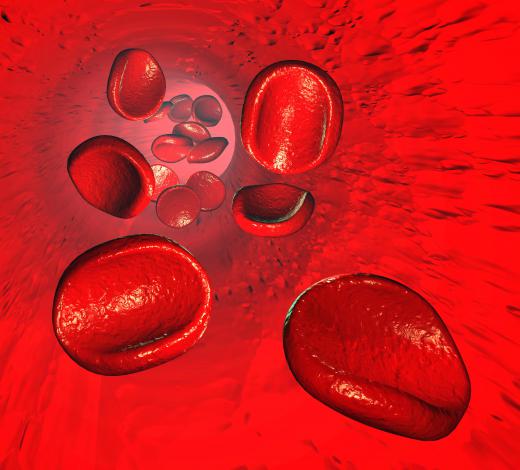What is a Respirocyte?
 Michael Anissimov
Michael Anissimov
A respirocyte is an engineering design for a machine that cannot be built with current technology: an artificial red blood cell a micron in diameter. If progress in nanotechnology continues as rapidly as it has for the first decade of the 21st century, we may see respirocytes used in medicine or even recreationally by 2020 or 2030.
The most interesting thing about a respirocyte is its internal pressure: about 1000 atmospheres. The respirocyte would be spherical, the optimal shape for high-pressure vessels, and made out of pure diamond or sapphire, ideal engineering materials for durable nanosystems. The high pressure is permitted by the strength of these materials.

At 1000 atmospheres of pressure, respirocytes could hold 200 times more oxygen and carbon dioxide than our natural red blood cells. This could allow a person to hold their breath at the bottom of a swimming pool for four hours, or let someone sprint at top speed for at least 15 minutes without stopping to breathe. Such feats are impossible today.
Powered by glucose in the blood, a respirocyte has a remarkably simple design. All that is needed for its eventual realization is the continued advancement of miniaturization in manufacturing, a trend that has held stably for decades, and is closing in on the atomic scale. What is needed is 3D nanoscale fabrication, a capability foreshadowed by the use of scanning tunneling microscopes to manipulate individual atoms on a surface.

The respirocyte consists of three major design components: rotors to take in oxygen from the lungs and release it in the bloodstream; rotors to gather carbon dioxide from the bloodstream and release it in the lungs; and rotors to take in glucose from the bloodstream for generating energy in a process similar to cellular respiration. Preliminary studies have found that extremely smooth diamondoid surfaces would be practically invisible to white blood cells, making the devices biocompatible.
Respirocytes were designed and analyzed in detail by Robert Freitas, a nanotechnology researcher at the Institute for Molecular Manufacturing. The paper describing the concept is titled, "A Mechanical Artificial Red Cell: Exploratory Design in Medical Nanotechnology." Nanomedical applications such as those envisioned by Freitas could become commonplace in the mid-to-long term futures of many of those alive today.
AS FEATURED ON:
AS FEATURED ON:












Discuss this Article
Post your comments